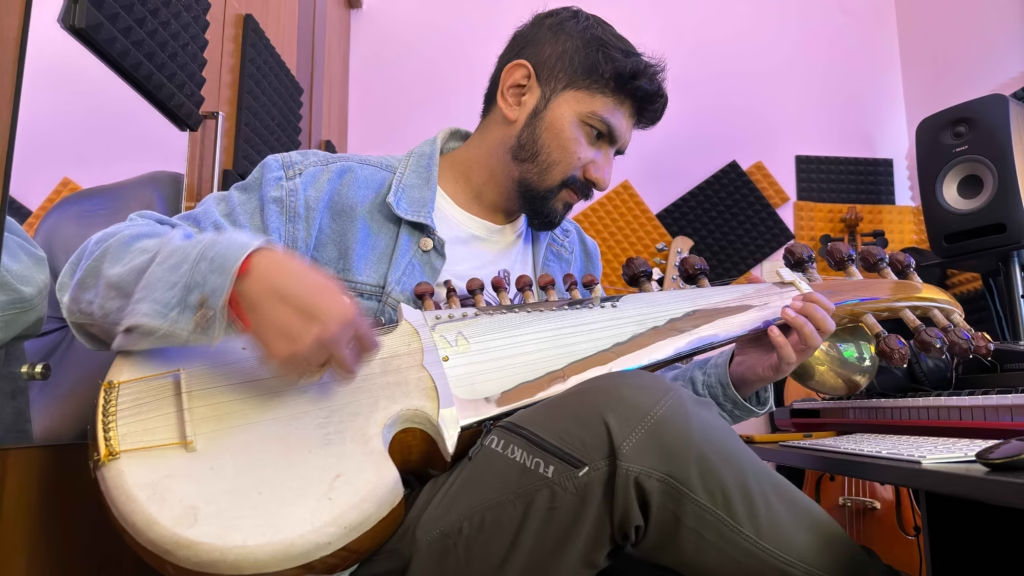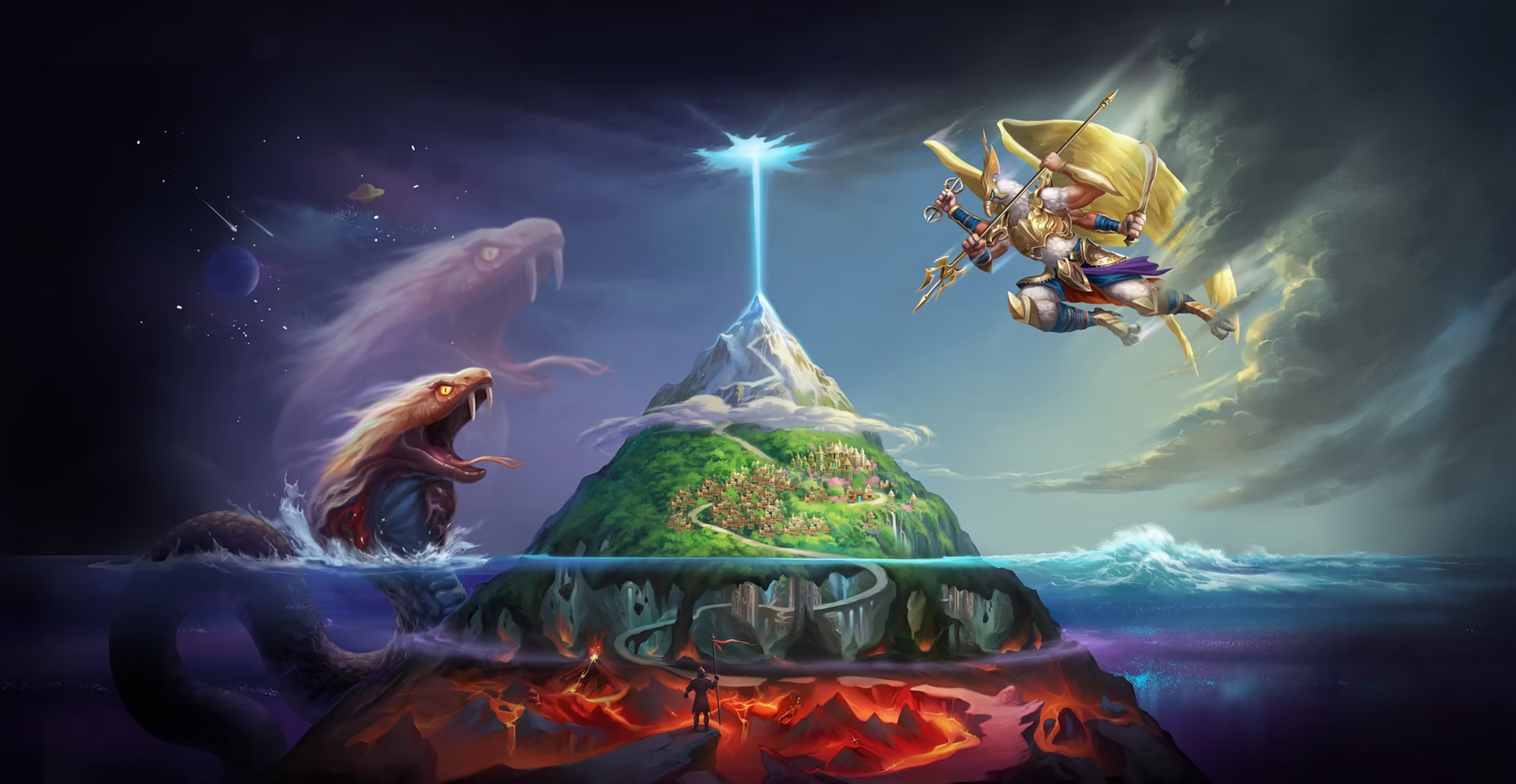Welcome to the sixth edition of Drop C++, a series about the people who put the music into your favourite (and not-so-favoured) games. Over the course of discussions with a variety of musicians, composers and sound designers, this set of articles will seek to shed some light on how the music comes together, the people who make it, what inspires them and more. And with that out of the way, sit back, relax and enjoy Volume 6 of the series.

Kurukshetra: Ascension is described by its makers as a ‘strategy card game themed on India’s two great epics — the Mahabharata and Ramayana‘. Music wouldn’t necessarily be high atop my list when noting down the most important elements of a card game, but then, I’m not Stabak Sengupta. And in order to fully understand his story, we’ll need to go back to 2017. Having spent a large chunk of his career until then in radio as a promo producer/sound engineer, he had begun to feel a sense of great ennui with where he was in life.
Reshuffling the deck
“In that industry, I would say that I felt a bit trapped and creatively handicapped,” admits Stabak, “I wanted to do something a bit more experimental because radio had become far too mechanical for me. I was on the lookout for a new job, a freelance opportunity or something.” It was around that time that the first announcement trailer for Sucker Punch Production’s Ghost of Tsushima dropped. “I was interested in gaming audio anyway, but the music, the sound design and almost everything else in that clip blew my mind,” he recalls, “And I wanted to do something similar.”
His journey took him to the studio Zatun, where he worked on a game called Down and Out, a first-person VR brawler. “I did some music for them — the boss music, to be precise. And for a while, it scratched the itch. But at the end of the day, I was still working in a freelance capacity. What I really wanted was to be part of a team where I could work with game developers, artists etc.” As luck would have it, it was a couple of years later that he saw a job opening on LinkedIn: Studio Sirah was looking for a sound engineer. “So I wrote to (studio founder) Abhaas Shah with a stack of questions: What is the client [with whom you are working] like? What is the format of the game? And so on,” Stabak continues, “So he told me a bit about Kurukshetra: Ascension and we began to discuss what he was looking for.”
With a background in Indian classical music, the sound designer/music composer fit the bill for the game perfectly. But Abhaas was looking for something classical that was simultaneously contemporary. “I put together a demo that fused Indian classical music with dubstep, and sent it across to him,” says Stabak, “He liked it very much, everything seemed to click, and I ended up joining Studio Sirah.” Well-acquainted with a variety of Indian classical instruments including the sitar, sarod, dotara, dhol and pakhavaj, one of the biggest attractions of working on Kurukshetra: Ascension was that he would get to deploy his entire arsenal of instruments.
And if at this point you’re imagining Stabak rocking up to Studio Sirah on Day One and kicking off an impromptu multi-instrumental jam, you couldn’t be further from the truth. “On my first day, the thing that came to my mind before even playing a single note, was the fact that this game was going to be played on mobile devices,” he begins, “And I need to make my audio (music and SFX) emerge from a very small speaker.” While the game that turns three years old this month is also available on PC, a large percentage of the player base was expected to be on mobile. And the challenge was to find a favourable frequency range to ensure that none of the sounds were harsh or muffled. Eventually, it was the sound engineer in him that cracked the formula.
“Finally, I hit upon a mid-frequency range that would enable all the audio to sound as intended on little speakers, earphones, headphones, and the rest,” he recalls. One thing led to another and soon after, Stabak was combining his knowledge of Indian classical instruments with the sound engineering game. “I thought it would be cool to use these instruments for the UI SFX as well,” he says, “So, the ‘Start Game’ sound has a sitar drone, there’s a mridangam stroke for another button and so on. Ultimately, each of the different buttons play a unique musical sound when clicked. And so the whole process of providing SFX became much more musical than expected.”

Cards on the table
“I started off with the guitar, and during school I played in a band,” reminisces Stabak about a time before his stint in radio, “I played with a couple of Indian classical musicians, and so was exposed to a bit of Indian classical music alongside the western rock that I was already into.” Incidentally, it was only for the guitar — and to learn the very basic things — that he took lessons or classes. A course in sound engineering from Mumbai was the next step for the West Bengal native, and that was where he learned about music programming.
“After that, I started making scratch tracks or demos for Bollywood music composers, and very soon I realised that I was not too happy with the sort of music I was being asked to produce,” admits Stabak, “And then I moved to advertising, then over to radio and the rest is history. In terms of training, for most of my life I was training on the job.”
Naming Steve Vai, Hans Zimmer, Niladri Kumar and the late Zakir Hussain and their own respective takes on music and composition as his biggest inspirations, Stabak’s own musical process begins with the keyboard. “It always starts with the keyboard… and the brief. Let’s take Kurukshetra: Ascension, for example, and it has a lot of seasons with different themes,” he explains, “And when I get a brief that this particular season is going to have a certain theme, I try to figure out its temperament, tone, and tenor.”
To elaborate, Stabak cites the fifth season of the game, The Apsara Court. “With this season, obviously all the cards were Apsara-based, and it was my view that the music needed to be soothing and ethereal,” he points out, “The aggression levels needed to be very low, and so I picked out the Oud, an Arabic instrument to bring my ideas to life.” And as always, he began with the keyboard on Logic Pro with an Oud plugin. After experimenting with a few moods and melodies, he was ready to try putting down some tunes. Again, all of this took place on the keyboard until he had the tune locked in.
“At that point, I began working with an actual Oud and tried playing with some Arabic nuances and a few Indian classical ones,” he says, explaining, “You see, if I programme the Oud on the keyboard, it wouldn’t sound authentic. And so I need to record the actual Oud to get the real feel of the instrument. Once that’s done, we head for orchestration.” After going over the mechanics of his process, Stabak shares his personal musical philosophy, and it all starts at the base.
“Most epic-based games use music that is culturally and geographically relevant — whether that’s in terms of instruments used or style of singing,” he begins breaking it down, “But what I’ve observed is that the base of the composition is always western classical music with a regional flavour. The base I use is Indian ragas to create the tune, and then western classical instrumentation goes over that.” To make his point, Stabak draws my attention to Black Myth: Wukong, where there are cellos, brass and string sections, Chinese instruments and the rest, but the base of the melodies, he states, is western classical music.
So what’s next for Stabak?
“Since I work full-time at Studio Sirah, I’m already working on the next project which I can’t talk about at this point,” he says, “But I can say that I’m working on both SFX and music, just like with Kurukshetra: Ascension — and again, I’m finding that having all the audio under my purview is just so much simpler. But yeah, that’s what I’m doing at the moment.”
And we’ll be sure to check back in with the Studio Sirah team to find out just what that new project is all about.


